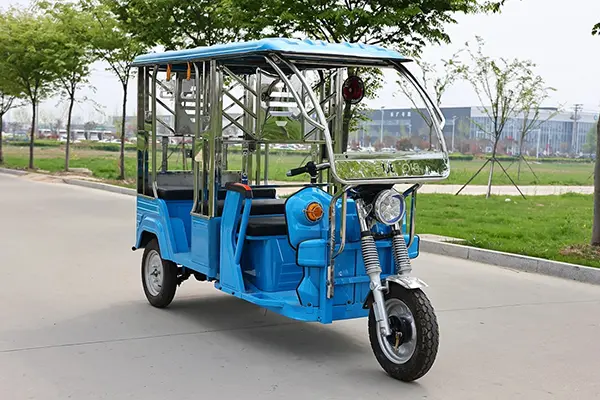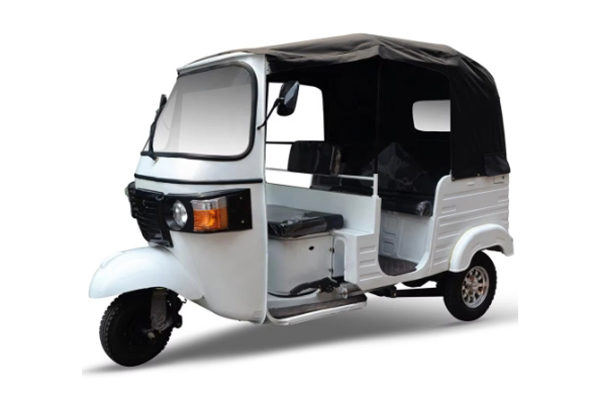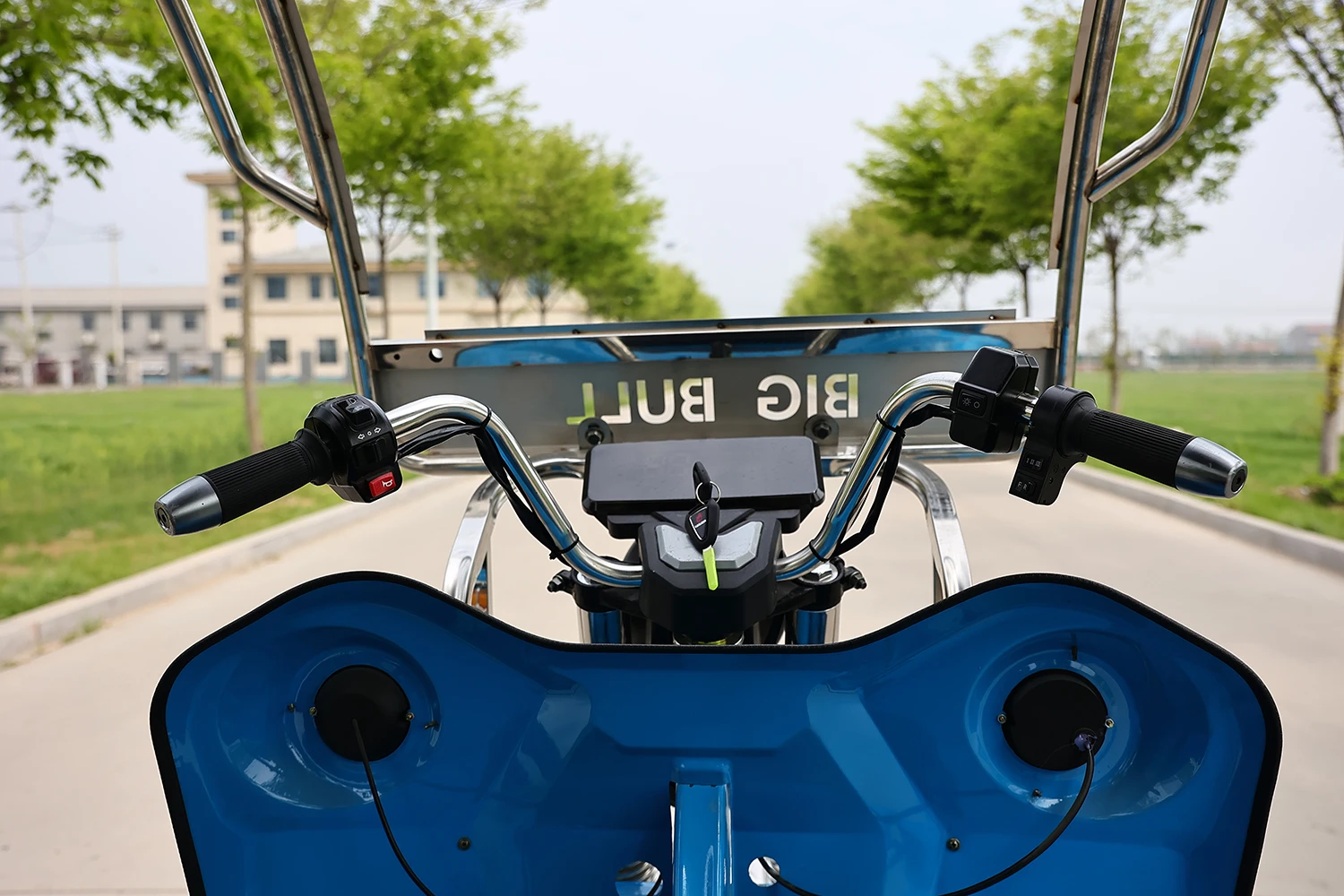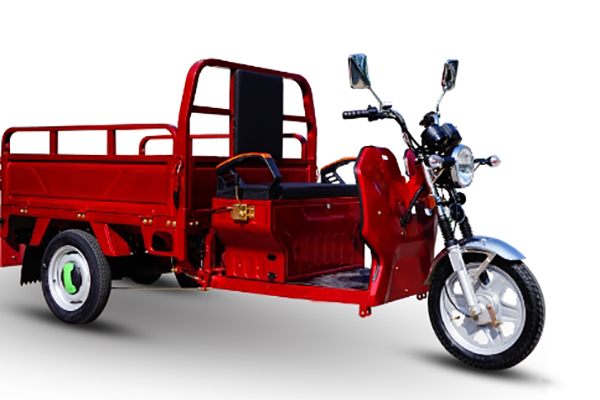Welcome! Thinking about an electric passenger tricycle? You’re in the right place. These three-wheeled wonders are changing how we think about personal and commercial transportation. They offer a stable, eco-friendly, and often fun way to get around or transport passengers. Whether you’re a business owner like Mark Thompson in the USA looking for fleet solutions, a tourism operator wanting unique tour vehicles, or someone seeking a comfortable ride, understanding the electric tricycle world is key. As Allen, representing a dedicated electric tricycle factory in China, I’ve seen firsthand the rise of these vehicles and know what matters most to buyers. This article dives deep into electric passenger tricycles, covering everything from motor power and battery life to seat configurations and finding a reliable supplier. We’ll explore the features, benefits, and essential info you need to make an informed decision, ensuring you find the perfect etrike for your needs. Stick around, and let’s explore the exciting possibilities of the electric passenger tricycle.
What Exactly is an Electric Passenger Tricycle? (Basic Info)
At its core, an electric passenger tricycle, sometimes called an electric trike or etrike, is a three-wheeled vehicle propelled by an electric motor, designed specifically to carry one or more passengers in addition to the rider. Think of it as a blend between a traditional bicycle or tricycle and a small electric vehicle, offering stability thanks to its three wheels (usually one front wheel and two rear wheels). Unlike standard bikes, the primary function here is passenger transport, often featuring dedicated passenger seats, sometimes arranged in a single row behind the rider.
These vehicles use a rechargeable battery pack to power the electric motor, providing assistance to the rider or fully powering the tricycle. They come in various styles, from open-air designs resembling a modern rickshaw to more enclosed models offering weather protection. The basic info usually highlights the number of seats, motor power (like 48v systems or specific wattages), battery capacity, and intended use, whether for personal leisure, handicap accessibility, or commercial transportation services. They represent a growing category in electric mobility, bridging the gap between electric bikes and larger vehicles.
As a manufacturer (Allen here!), we see diverse applications. The core appeal lies in providing a stable, easy-to-operate, and environmentally friendly mode of short-distance transport. The three-wheel design inherently offers more stability than a two-wheeled bike, making it accessible to a wider range of users, including older adults or those less confident on a traditional bicycle. This stability is crucial when carrying passengers, ensuring a safer and more comfortable ride for everyone onboard.

Why Choose an Electric Tricycle for Passenger Transport?
Choosing an electric passenger tricycle comes with a basketful of benefits, making it an increasingly popular option for various needs. Firstly, the environmental aspect is a huge plus. Being fully electric, these tricycles produce zero tailpipe emissions, contributing to cleaner air in urban environments – a significant advantage over traditional gasoline-powered taxis or auto-rickshaws. This aligns with the global push towards sustainable transportation solutions. For businesses like Mark’s, showcasing an eco-friendly fleet can also be a strong selling point.
Secondly, the operational costs are typically lower. Electricity is generally cheaper than gasoline, and electric motors have fewer moving parts than internal combustion engines, often leading to reduced maintenance needs. This cost-effectiveness is a major draw for commercial operators focusing on profitability, whether for delivery services or passenger transport. The simplicity of charging (often just plugging into a standard outlet) adds to the convenient nature of these electric vehicles. The ride itself is often smoother and quieter, enhancing passenger comfort.
Finally, accessibility and ease of use are key advantages. The inherent stability of the three-wheel design makes the electric tricycle approachable for a broad demographic, including seniors and individuals with mobility challenges (handicap accessibility features are available on some models). They are often easier to balance, mount, and dismount than a two-wheeled electric bike. For commercial use, this ease of operation can mean a wider pool of potential drivers. It’s simply a practical and often enjoyable way to enjoy the outdoors or navigate city streets without the stresses of driving a larger vehicle.
Key Features to Look For: Decoding the Product Description
When browsing for an electric passenger tricycle, the product description and spec sheet are packed with crucial details. Understanding these features helps you choose the right electric trike for your needs. Pay close attention to the motor specifications – wattage (like 750W) indicates power, influencing acceleration and ability to handle hills, while voltage (e.g., 48V) relates to the system’s overall efficiency and power delivery. A reliable motor is paramount, especially for commercial use where durability is key.
The battery is the heart of the electric tricycle. Look for details on capacity (usually in Ampere-hours, Ah), which dictates the range per charge. Also, consider the battery type (Lithium-ion is common for its energy density and longevity) and charging time. Some suppliers offer options for an extra battery or different capacity levels. Safety features are non-negotiable: check for quality brake systems (often disc brakes for better stopping power), lights for visibility, and sturdy frame construction. For passenger models, look for secure seating with features like a backrest, armrests, and potentially a safety belt or harness, especially if carrying children or vulnerable passengers.
Don’t overlook comfort and convenience features listed in the basic info. A comfortable rider seat (like a padded saddle) and ergonomic handlebar design make longer trips more pleasant. Features like a storage basket (front or rear), step-thru frame design for easy mounting, and suspension systems (like a multi-vibration damping system) significantly enhance the user experience. For B2B buyers like Mark, understanding the weight capacity (both for rider and passengers/cargo) is essential to ensure the tricycle meets operational demands across different terrain or road conditions. Always check if the tricycle electric tricycle comes assembled or requires setup upon delivery.

Are Electric Passenger Tricycles Suitable for Adults?
Absolutely! Electric passenger tricycles are very well-suited for adult riders and passengers. In fact, much of their design caters specifically to adult users seeking stability, comfort, and ease of use that might be lacking in traditional two-wheeled bikes or electric bikes. The three-wheel configuration provides a stable platform, eliminating the balance concerns associated with bicycles, which is a significant benefit for older adults, those with physical limitations, or anyone who simply prefers a more secure-feeling ride.
The design often incorporates features beneficial for adults, such as comfortable, wider seats (sometimes a padded saddle style), adjustable handlebars, and often a step-thru frame design that makes getting on and off the tricycle much easier. The electric assistance provided by the motor means less physical exertion is required, making it possible for adults of varying fitness levels to tackle longer distances or gentle inclines without strain. This makes the electric trike a fantastic tool for maintaining mobility and independence.
Furthermore, the passenger carrying capability makes them great for adult companions, whether it’s giving a friend a lift, running errands together, or for commercial uses like short-distance taxi services or tours. Models like the EV31 Electric passenger tricycle are designed with adult comfort and safety in mind, featuring robust frames and adequate passenger seat space. The focus is on providing a practical, reliable, and enjoyable transportation option for grown-ups.
Understanding Motor Power: Is a 750W Motor Enough for Your Ride?
When looking at electric passenger tricycles, you’ll often see motor power listed in watts (W), with 750W being a common specification, particularly in markets like the USA where it often aligns with e-bike regulations. But is a 750W motor sufficient? For most typical uses, yes, a 750W motor (often paired with a 48V system) provides a good balance of power, efficiency, and regulatory compliance. It offers enough grunt for brisk acceleration, carrying a rider and one or two passengers, and tackling moderate hills without bogging down.
A 750W motor generally allows the electric tricycle to reach reasonable speeds (often capped electronically for regulatory reasons, check the specified top speed) and provides significant assistance when pedaling (if it’s a pedal-assist model) or full power in throttle mode. It makes the ride feel capable and responsive, especially when starting from a stop or navigating varied urban terrain. For comparison, lower wattage motors (e.g., 250W or 500W) might struggle more with heavier loads or steeper inclines, while significantly higher wattage motors might offer more power but could drain the battery faster and may face stricter regulations.
However, the "right" power depends on your specific needs. If you plan to frequently carry heavy loads, multiple passengers, or operate in very hilly areas, you might inquire about higher-power motor options if available and legally permissible. Conversely, for primarily flat terrain and lighter use, a lower wattage motor might suffice and could offer longer battery range. As a manufacturer, we often offer various motor options to cater to different market requirements and use cases. For a versatile passenger tricycle, 750 watts often hits a sweet spot for performance and practicality.

How Far Can You Go? Battery Range and Charging Explained (48V & More)
The range – how far an electric passenger tricycle can travel on a single battery charge – is a critical factor for potential buyers, especially for commercial operators like Mark who need reliability throughout a workday. Range depends heavily on several factors: battery capacity (measured in Ah or Wh), motor efficiency, the total weight being carried (rider + passengers + cargo), the type of terrain (hills consume more power), riding style (frequent stops/starts reduce range), and even ambient temperature. Manufacturers usually provide an estimated range in the product description, but it’s essential to understand this is often under ideal conditions.
Battery capacity is the biggest determinant. A higher Ah rating on a battery (at a given voltage like 48V) generally means more energy storage and thus longer potential range. Lithium-ion batteries are the current standard for most quality electric tricycles due to their better energy density, longer lifespan, and lighter weight compared to older lead-acid types. Ask your supplier about the specific battery chemistry and expected lifespan (number of charge cycles). Some models might offer options for larger batteries or the possibility to carry an extra battery to extend the operational trip.
Charging is the other side of the battery equation. Most electric tricycles can be charged using a standard household outlet. Charging times vary depending on the battery size and charger output, typically ranging from 4 to 8 hours for a full charge. Faster chargers might be available but can sometimes impact long-term battery health if not managed properly. For fleet operations, planning charging schedules and potentially setting up dedicated charging stations is crucial. Understanding the real-world range and charging logistics is vital before committing to purchase, especially when buying in bulk to ship internationally.
Single Row vs. Other Seats: What Passenger Seat Configuration is Best?
The passenger seat arrangement is a defining feature of an electric passenger tricycle. A common configuration, especially in models resembling a rickshaw or designed for one or two passengers, is the single row seat located behind the rider. This setup is straightforward, often providing a bench-style seat that can accommodate one or two adults side-by-side, or perhaps an adult and a child. It allows for easy communication between the rider and passengers and offers a forward-facing view for the passengers.
However, single-row isn’t the only option. Some designs might feature face-to-face seating, individual seats, or even configurations where the passenger seat is in front of the rider (less common for multi-passenger models). Enclosed models might have more car-like seating. The best configuration depends entirely on the intended use. For taxi or tour services, a comfortable single row passenger seat with adequate legroom and safety features like a harness or safety belt is often preferred. Models like the Electric passenger tricycle K01 often showcase this popular layout.
Consider the type of passengers you’ll primarily carry. If it’s mostly single adults, a spacious single-row bench might be ideal. If carrying children, integrated child seats or secure harness points are important. For accessibility (handicap use), features like swivel seats or ample space for easy transfer might be necessary. Always check the product description for seat dimensions, materials (look for weather resistance and comfort like a padded saddle feel), and safety inclusions. The passenger seat is more than just a place to sit; it’s a core part of the electric tricycle’s function and user experience.
Beyond Passengers: Can Electric Trikes Handle Cargo Too?
While the primary focus of an electric passenger tricycle is carrying people, many models offer surprising versatility by incorporating cargo carrying capabilities. It’s common to find these electric tricycles equipped with a basket, either at the front or, more frequently, a larger one at the rear. This adds a practical dimension, allowing riders to carry groceries, personal belongings, or small goods alongside passengers.
Some designs cleverly integrate cargo space without compromising the passenger seat. For instance, a basket might be mounted below or behind the rear passenger seat. Other models might have a modular design where the passenger seat could potentially be swapped for a dedicated cargo platform, although this is less common in purpose-built passenger models. The weight capacity specified by the manufacturer usually includes the combined weight of the rider, passengers, and any cargo, so it’s important not to overload the tricycle.
For businesses needing dual function, this blend can be very efficient. Think of small delivery services that occasionally need to transport a helper, or resorts using trikes for guest transport and luggage handling. Even for personal use, having that extra cargo space makes the electric trike much more practical for daily errands. If cargo capability is important, look for models explicitly mentioning a basket or storage area and check its dimensions and weight limits. Some heavy-duty models might even have options for a hitch to pull a small trailer, further expanding their utility, though this is more typical of dedicated Electric cargo tricycle HJ20 models. Always ensure the brake system is robust enough for the combined load.

Shipping, Delivery, and Refunds: What International Buyers Must Know
For buyers like Mark Thompson in the USA purchasing electric passenger tricycles from overseas suppliers, understanding the logistics of shipping, delivery, and potential refund policies is crucial. Sourcing from countries like China often offers competitive pricing, but navigating international shipping requires attention to detail. You’ll need to clarify Incoterms (shipping terms like FOB or CIF) with your supplier to understand who is responsible for costs and risks at each stage of the transport process. Shipping costs can vary significantly based on volume, mode (sea freight is common for bulk orders), and destination port.
Delivery times also need consideration. Sea freight can take several weeks, plus time for customs clearance at the destination port. Ensure your supplier provides realistic timelines and tracking information. Customs duties, taxes (like tariffs), and import regulations specific to electric vehicles in your country (e.g., the USA) must be factored into the total cost and compliance requirements. Working with a customs broker can simplify this process. It’s vital to ensure the electric tricycles meet local safety standards (like DOT regulations if applicable) before they even ship.
Discuss warranty terms and refund policies upfront. What happens if there’s damage during shipping? What if the tricycle electric tricycle doesn’t meet the agreed specifications upon delivery? Reputable suppliers should have clear policies. Ask about the availability of parts electric tricycle components and after-sales support. Building a relationship with a trustworthy supplier who communicates clearly about these logistical and support aspects is key to a smooth B2B transaction. Don’t hesitate to ask detailed questions and get agreements in writing. If you need info, please contact the supplier directly.
Finding Your Ideal Supplier: Tips for Sourcing from Xuzhou and Beyond
Identifying the right supplier is perhaps the most critical step for B2B buyers investing in a fleet of electric passenger tricycles. Regions like Xuzhou in China are known hubs for electric vehicle manufacturing, hosting numerous factories (ltd or co entities). While this offers choice, it also requires due diligence. Mark Thompson’s methods – attending exhibitions and using Google search – are common starting points. Exhibitions allow you to see the product description samples firsthand, meet supplier representatives, and compare offerings directly. Online searches can yield a vast list, but require careful vetting.
When evaluating a potential supplier, look beyond just the price. Consider their manufacturing experience, quality control processes, and certifications (like ISO). Do they specialize in electric tricycles, or is it just one part of a broader portfolio? A specialized factory often has deeper expertise. Request basic info about the company, references from other international buyers if possible, and perhaps even arrange a factory audit for large orders. Communication is key – is the sales team responsive, knowledgeable, and fluent in your language? My role (as Allen) often involves bridging this communication gap for our clients.
Don’t be afraid to ask technical questions about components like the motor, battery, frame materials, and brake systems. Inquire about customization options, availability of spare parts, and warranty support. Understand their production capacity to ensure they can handle your order volume and meet delivery timelines. Compare quotes from multiple suppliers, but weigh quality, reliability, and service against the price. A slightly higher price from a reputable supplier with proven quality and support, like those featured on www.autotrikes.com, can be more cost-effective in the long run than dealing with potential quality issues or poor service from the cheapest option. Send your message with detailed requirements to get accurate quotes.
Key Takeaways: Electric Passenger Tricycles
To wrap up our exploration of the electric passenger tricycle, here are the essential points to remember:
- Versatility: These electric vehicles offer a stable, eco-friendly solution for passenger transport, suitable for personal use, delivery, tourism, and more.
- Stability & Accessibility: The three-wheel design provides inherent stability, making them accessible to a wide range of adult riders.
- Key Features: Pay close attention to motor power (e.g., 750W), battery capacity and type, brake quality, and passenger seat design (single row, harness, comfort).
- Electric Power: The electric motor and battery system offer lower running costs and zero emissions compared to gas alternatives. Understand range limitations and charging needs.
- Beyond Passengers: Many models include cargo space, often via a rear basket, adding practicality.
- B2B Considerations: International buyers must carefully evaluate suppliers (consider specialists in areas like Xuzhou), understand shipping logistics, customs, warranty, and refund policies.
- Supplier Selection: Look for reliable manufacturers with proven quality, good communication, and robust after-sales support, not just the lowest price. Finding a trusted partner is crucial.
An electric passenger tricycle can be a fantastic investment, offering a unique blend of efficiency, convenience, and enjoyment. By considering these points, you’ll be well-equipped to choose the perfect electric trike for your journey.
Post time: 03-31-2025




